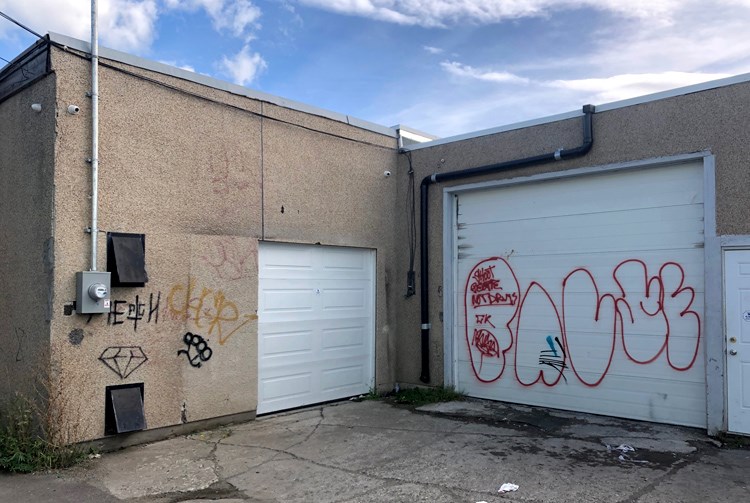An update to the Regional District of Fraser-Fort George's unsightly premises bylaw prompted a debate about graffiti and freedom of expression.
On Sept. 17 the district board of directors approved updates to the district's bylaw enforcement policy and unsightly premises bylaw. However, Electoral Area H director Dannielle Alan said she was concerned about the inclusion of graffiti in the unsightly premises bylaw.
"I cannot support this bylaw with the definition of graffiti as it stands," Alan said. "I'm talking about graffiti that owners put on their own property. There is a critical role that graffiti plays in political discussion."
The district's previous unsightly premises bylaw, which was passed in 1991, only specifically mentioned "the storage or accumulation of motor vehicles that are unroadworthy or parts thereof" and "the collection or accumulation of rubbish" as possible triggers for enforcement. Otherwise bylaw officers were left to use their discretion as to whether a property was unsightly, based on the common dictionary definition.
The bylaw passed this month added, "the presence of graffiti," "buildings or structures that are collapsed or in a state of significant disrepair," and "any other similar conditions of disrepair, dilapidation or deterioration" as conditions warranting enforcement. In addition, it updated the derelict vehicle clause to specify three or more vehicles, unless the property is a vehicle-related business or the vehicles are enclosed in a compound.
Alan said she is concerned that what one person considers considers art or a political statement could be seen as graffiti by others. In addition, graffiti has a long history and has often proven useful to historians, she said.
"I don't find graffiti a nuisance," Alan said. "We prefer freedom of expression in the Robson Valley."
District manager of development services Kenna Jonkman said she couldn't recall any incident where the district received a complaint about graffiti on a property. When the bylaw was drafted no specific definition of graffiti was included to allow bylaw officers to use common sense when enforcing it, Jonkman said.
The goal of the bylaw is to target graffiti including foul language or racial slurs, not murals painted on buildings with the owners' permission, she said.
One of the provisions of the new bylaw enforcement policy is it gives bylaw officers leeway to ignore complaints which they believe are vexatious, frivolous or involve repeated complaints over the same issue, Jonkman said.
Sometimes disputes between neighbours can result in complaints being filed to the district's bylaw officers, she said. The new bylaw enforcement policy would reduce the chances of the district's bylaw process being used by residents to harass each other.
"Everything is done on a case-by-case basis," Jonkman said. "If we were to receive a compliant about a mural... it is very unlikely we would move on that complaint."
Prince George Coun. Terri McConnachie, who also serves as a regional district director, said there is clear difference between vandalism and graffiti as street art.
Prince George Mayor Lyn Hall, who sits on the district board as a director, said the city has a graffiti clause in its unsightly premises bylaw and has worked with several local non-profit organizations to combat graffiti.
"It's very difficult for someone to build a three-or-four-million dollar building, and then have someone come along and spray paint it," Hall said.



